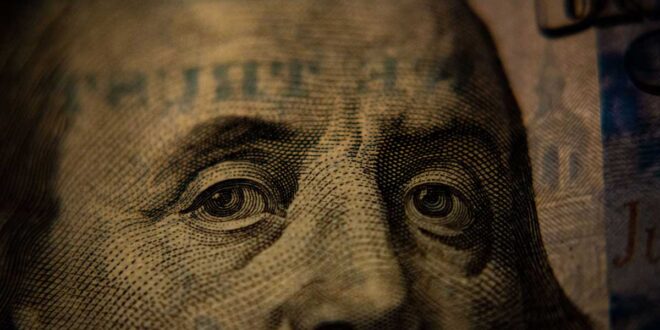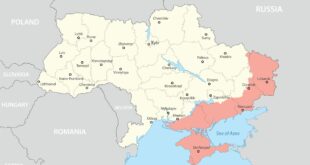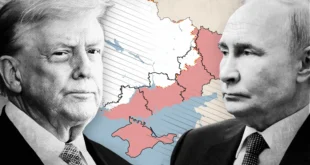Over the period of last few months, economies of states and regional blocs have taken the initiative to trade in currencies other than the US dollar. This is a consequence of the extensive sanctions the US has imposed on Russia and other countries for numerous counts. The sanctions have made it difficult for countries to trade in US dollars, therefore impacting the foreign exchange and trade of respective countries for a long term. One of the significant event was when an EU country traded in yuan for energy supplies. On 28 March, the Chinese national oil company and France’s Total Energies successfully transacted LNG trade in yuan through the Shanghai Petroleum and Natural Gas Exchange for around 65,000 tonnes of LNG. On the same day, ASEAN Finance Minister and Central Bank Governors met in Indonesia to reduce dependence on the US dollar, Euro, Yen and British Pound from financial transactions. They discussed measures to expand ASEAN cross-border digital payment system under the Local Currency Transaction (LCT) scheme to include trade exchanges. Earlier on 21 March, President of Indonesia, Joko Widodo, urged agencies and authorities to transition away from Visa and Mastercard, develop its local indigenous payment platform, and learn from the sanctions imposed on Russia.
On 29 March, China and Brazil agreed to trade and financial transactions directly in their currencies against the dollar at the Brazil-China Business Seminar in Beijing. The President of Brazilian Trade and Investment Promotion Agency (ApexBrasil) Jorge stated that the new agreement will “reduce costs” and “promote even greater bilateral trade and facilitate investment.”
On 21 March, the Reserve bank of India (RBI) permitted banks from 18 countries to use Indian rupees for trade and exchange through Special Vostra Rupee Accounts. On the same day, Russia’s president Vladimir Putin stated that “We support the use of Chinese yuan in payments between Russia and countries of Asia, Africa, and Latin America,” during the Sino-Russian talks. Numerous other countries have taken the initiative to use their own currencies to trade bilaterally and insulate their economies from the risk and instability posed by the US Dollar. In this regard, it is pertinent to look at what made the US dollar dominant in world trade, how is it a risk and what made the currency weak over time.? In addition, the implications of dedollarisation of world trade is also examined.
What is the background ?
First, the world currency system and the dominance of the dollar. The Bretton Woods agreement established the US dollar as the reserved currency of the world, backed by the largest gold reserves. Around 90-95 per cent of the world’s gold reserves were held in American vaults which the US. offered to store and secure in return for dollars. This meant that all the countries needed US dollars for trade and bilateral or multilateral transactions with countries or International Institutions. However, US President Nixon in 1971 delinked the value of the dollar to be based on gold, which led to the floating exchange rates today, where the forex market sets the currency based on the supply and demand of other currencies. This results in short-term fluctuations and differentiations in the exchange rates leading to debts. According to the International Monetary Fund, the share of global central banks’ holdings of US dollar reserves decreased to 59 percent from 70 percent, the lowest level in 25 years. This reflects the decline of dollar dominance as countries started to use other currencies for transactions.
Second, the risk and weaponization of the dollar. The US dollar experiences fluctuations due to speculations caused by geopolitical events and uncertainties. The Silicon Valley Bank collapse recently led to the dollar slipping from 0.153 per cent to 104.080. When investors turned their attention to safe-haven Asian currencies, the Japanese yen rose by 0.34 per cent to reach its highest level in a month of 134.52 per dollar. The strengthening of the dollar is also a problem, as the relative weakening of other economies’ currencies has made it difficult to control inflation. The consumers of dollars are also threatened by the weaponization of the currency through sanctions to limit their sovereignty and achieve strategic goals.
Third, the weakening of the dollar. A declining dollar increases the cost of imports while increasing the appeal of exports to customers in other nations outside the US. The US has had a trade imbalance with other countries for a long time, making them net importers. In addition, the US economy has been running large deficits for years, and the dollar’s value has been declining. This has led some countries to question whether the dollar is still the safest and most reliable currency for international transactions.
What does it mean?
First, de-risking from the dollar and streamlining payments. Drawing lessons from the sanctions on Russia for its war on Ukraine, countries are insulating their economies from the SWIFT system due to the risk and instability it poses. Cross-border payments and loans are initiated to reduce the risk of wide gaps in interest differentiation and easy money transactions. Bilateral and multilateral institutions have agreed to trade on their local currency system or a relatively stronger currency.
Second, implications on the world market. The market indexes, especially those that largely favour American corporations, may be significantly impacted by this transition from the US currency. The value of US equities might decrease if there is less demand for US dollars, which would lower the value of the US currency. De-dollarization may also impact those who invest in foreign currencies or travel overseas. The dollar’s value may become more erratic if it loses some influence, making it more challenging to manage investments or budget for travel costs.
Third, it may lead to a great financial institution reset. The dollar dominates the Bretton Woods institutions like World Trade Organisation and IMF to provide loans and capital to the countries. This system may have to be reformed to accommodate multiple currencies for transactions, or a new monetary institution must be established. Regional and multilateral groupings have also taken the initiative to introduce common localised currencies for cross-border trade.
 Geostrategic Media Political Commentary, Analysis, Security, Defense
Geostrategic Media Political Commentary, Analysis, Security, Defense





